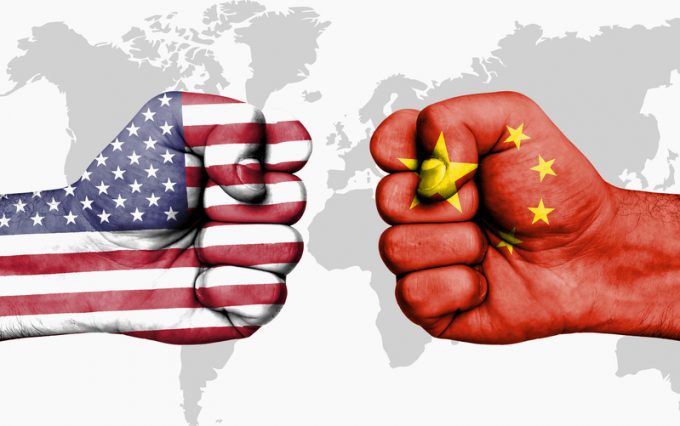How China US Tariffs Are Shaking the Global Economy
How China US Tariffs Are Shaking the Global Economy When economic titans collide, ripples extend far beyond bilateral trade. The escalating duties between China and the United States have catalyzed seismic shifts in production networks, currency markets, and consumer sentiment. This analysis unpacks the impact of tariffs on global economy, drawing connections between policy maneuvers and worldwide repercussions. Prepare to traverse intricate supply chains, volatile financial corridors, and the unexpected beneficiaries of trade friction.

A Brief Historical Overview
Trade frictions are hardly novel. Yet recent tariff skirmishes between the world’s two largest economies have reached unprecedented heights. In 2018, Washington imposed a 25% levy on $50 billion of Chinese goods under Section 301. Beijing reciprocated with duties on American agricultural exports. Over subsequent years, additional rounds elevated average tariffs to double-digit percentages on thousands of product lines.
This tit-for-tat has woven a tapestry of impact of tariffs on global economy that spans continents. Nations once peripheral to Sino-American commerce found themselves thrust into the limelight, while multinational corporations scrambled to reconfigure their footprints.
Mechanisms of Tariff Transmission
Tariffs operate through multiple conduits:
- Cost Pass-Through: Import duties raise the cost base for downstream manufacturers.
- Supply-Chain Diversion: Firms reroute orders to avoid levies, altering global logistics.
- Exchange-Rate Adjustments: Currency swings mitigate—or magnify—tariff burdens.
Each mechanism interacts with the others, creating a dynamic mosaic of trade and finance. The result is a web of cascading effects illustrating the profound impact of tariffs on global economy.
Supply-Chain Realignment
Manufacturers, ever agile, have embraced “China-Plus-One” strategies. Taiwan, Vietnam, Mexico, and India have emerged as alternate hubs. This decentralization dilutes China’s monopoly on assembly lines. Yet it introduces inefficiencies:
- Fragmented Logistics: Divergent rail gauges, port infrastructures, and customs protocols inflate lead times.
- Duplication of Capacity: Parallel production facilities raise global overhead.
- Skill Transfer Lag: Training new labor pools injects temporal friction.
Supply-chain consultants now extol the virtues of polemically diverse networks. The paradox: diversification insulates firms, but also elevates complexity. That complexity amplifies the impact of tariffs on global economy, as tangled webs demand constant recalibration.
Currency and Capital Flows
Tariffs rarely act in isolation. They provoke monetary countermeasures. China’s central bank has intervened to stabilize the yuan, preventing precipitous depreciation. Meanwhile, the U.S. Federal Reserve faces a delicate balancing act: rising inflation expectations from higher import costs versus the need to sustain growth.
Investors, sensing opportunity, shuttle capital across borders. Emerging-market bonds experienced episodic sell-offs as trade anxieties flared. Commodity-linked currencies—like Australia’s dollar—have oscillated on forecasts of Chinese demand for raw materials. In each instance, the impact of tariffs on global economy reverberates through FX desks and sovereign treasuries.
Sectoral Winners and Losers
Winners
- Near-Shore Manufacturers: Mexico and Vietnam gained new orders from firms sidestepping Chinese duties.
- Domestic Producers: U.S. steel mills, benefitting from Section 232 tariffs, saw rejuvenated demand.
- Specialty Agriculture: High-value crops, such as nuts and fruit, commanded premiums in alternative markets.
Losers
- Electronics OEMs: Tighter margins on smartphones and laptops led to cost-cutting and production slowdowns.
- Automotive Sector: Extended supply-chain buffers induced just-in-case inventories, inflating working-capital needs.
- Consumer Goods Retailers: Apparel and home-goods chains grappled with both higher input costs and sluggish demand.
Collectively, these divergent fortunes illustrate the nuanced impact of tariffs on global economy. No sector remains untouched, yet the magnitude varies dramatically.
Consumer Price Dynamics
Tariff hikes seldom vanish at the manufacturing gate. They trickle down to retail shelves. In the U.S., wash-and-wear garments saw price upticks of 5–10%. Chinese imports of furniture and toys recorded similar elevations. Eurozone consumers, insulated by regional trade barriers, nonetheless felt indirect effects via higher commodity prices.
Conversely, some households benefited from localized production: domestically made appliances, freed from Chinese competition, occasionally offered promotional rebates. This paradox—simultaneous price ratcheting and bargain hunting—underscores the multifaceted impact of tariffs on global economy.
Geopolitical Reverberations
Trade policy has metamorphosed into geopolitical ordnance. Allies and adversaries alike adjust their stances:
- European Union: Pushed for accelerated free-trade agreements with Asian partners to diversify beyond China and the U.S.
- ASEAN Bloc: Capitalized on near-shoring trends, drawing investment into nascent manufacturing corridors.
- African Nations: Lobbied for inclusion in supply-chain realignment, though infrastructural deficits pose hurdles.
Diplomacy now intertwines trade and security in unprecedented ways. The impact of tariffs on global economy thus transcends balance-of-payments deficits, shaping strategic alliances and foreign-policy calculus.
Innovation and Technology Transfer
Tariffs have spurred reconsideration of intellectual-property regimes. Companies cautious of punitive duties are accelerating onshore R&D. China, in turn, amplifies incentives for domestic innovation—subsidizing chip fabrication and green-energy projects. The outcome: a bifurcating technological landscape, wherein parallel ecosystems race toward AI, 5G, and biotech breakthroughs.
This dual-track innovation drive illustrates an indirect impact of tariffs on global economy: the contest for technological primacy now unfolds in laboratories and patent courts as much as in boardrooms and customs houses.
Financial Market Volatility
Equity benchmarks have gyrated in tandem with tariff announcements. The S&P 500 exhibited 2% swings on trade headlines. Emerging-market indices, particularly in Latin America and Asia, saw commensurate volatility. Options markets priced in elevated “risk-reversal” premiums, reflecting asymmetric downside fears. Fixed-income yields—a barometer of inflation and growth expectations—have similarly danced to the tariff tune.
Inactive markets—like municipal bonds—benefited from capital flight, while high-yield segments suffered as credit spreads widened. The impact of tariffs on global economy thus permeates asset-allocation decisions and portfolio risk management.
Environmental and Sustainability Considerations
Trade disruptions also bear ecological footprints. Firms, pursuing new plants in Vietnam or Mexico, may prioritize speed over environmental standards. Unchecked industrialization in developing corridors risks deforestation, water stress, and air pollution. Conversely, shorter shipping distances—if near-shoring holds—could marginally reduce CO₂ emissions from freight.
Sustainability metrics have, therefore, become entwined with supply-chain resilience. Corporate ESG disclosures now must account for tariff-driven relocations, integrating climate risk into trade-policy assessments. This nexus highlights the broader impact of tariffs on global economy, extending even into planetary health.
Policy Responses and Mitigation Strategies
Governments and industries have adopted diverse tactics to blunt tariff shocks:
- Trade Facilitation Measures: Streamlined customs procedures and bonded warehouses to minimize cost drag.
- Subsidies and Tax Credits: Grants for domestic producers facing unfair competition.
- Strategic Stockpiling: National reserves of critical components—semiconductors, rare-earth elements—to cushion supply interruptions.
- Bilateral Negotiations: Ongoing talks to pare back ad hoc levies in favor of rule-based frameworks.
These interventions reflect a collective effort to manage the impact of tariffs on global economy while preserving market efficiencies.
The Role of Multilateral Institutions
The World Trade Organization, long a pillar of dispute resolution, has struggled under bilateral pressure. Its appellate body remains underfunded, and procedural delays frustrate stakeholders. Regional pacts—RCEP in Asia, the CPTPP in the Pacific—offer alternatives, though membership overlaps complicate coherence.
Calls for WTO modernization emphasize expedited arbitration, digital-trade provisions, and clearer definitions of permissible subsidies. Success here could attenuate future tariff escalations and alleviate their impact on global economy.
Emerging Trends: Digital Tariffs and Data Localization
Beyond goods, services and data have become new frontiers. China’s mandates on data localization and digital-service taxes in Europe reflect rising digital-protectionism. Though not traditional tariffs, these measures erect barriers to cross-border e-commerce, cloud services, and online platforms. They exemplify how trade frictions evolve, perpetuating the impact of tariffs on global economy in cyberspace.
Future Outlook and Scenarios
Scenario 1: De-Escalation and Multilateral Revival
A concerted diplomatic push leads to phased tariff rollbacks and WTO reforms. Global trade volumes rebound, supply-chains reconfigure for efficiency, and inflationary pressures abate.
Scenario 2: Prolonged Stalemate
Persistent tit-for-tat tariffs entrench diversification away from China, fragmenting global production. Inflation remains elevated, and geopolitical tensions fester.
Scenario 3: Strategic Compromise with Sectoral Carve-Outs
Selective tariff relief for critical sectors—semiconductors, green technologies—coexists with maintained barriers elsewhere. This hybrid model balances competition with cooperation.
Each scenario carries distinct implications for the impact of tariffs on global economy—from growth trajectories to investment patterns.
Recommendations for Stakeholders
- Businesses: Conduct scenario-based supply-chain stress tests.
- Investors: Diversify across geographies and asset classes sensitive to trade flows.
- Policymakers: Prioritize rule-based dispute mechanisms over unilateral levies.
- Consumers: Expect price fluctuations; consider longer product lifecycles and circular-economy choices.
Proactive engagement can mitigate dislocations and harness opportunities spawned by tariff-driven realignment.
Conclusion
The China–U.S. tariff saga illuminates the intricate tapestry binding trade, finance, geopolitics, and even environmental stewardship. As duties ebb and flow, the world bears witness to profound transformations in production, consumption, and innovation. By tracing the impact of tariffs on global economy, stakeholders can better anticipate challenges and orchestrate resilient strategies. Though the path ahead is fraught with uncertainties, informed agility will prove the ultimate antidote to tariff-induced tumult.



